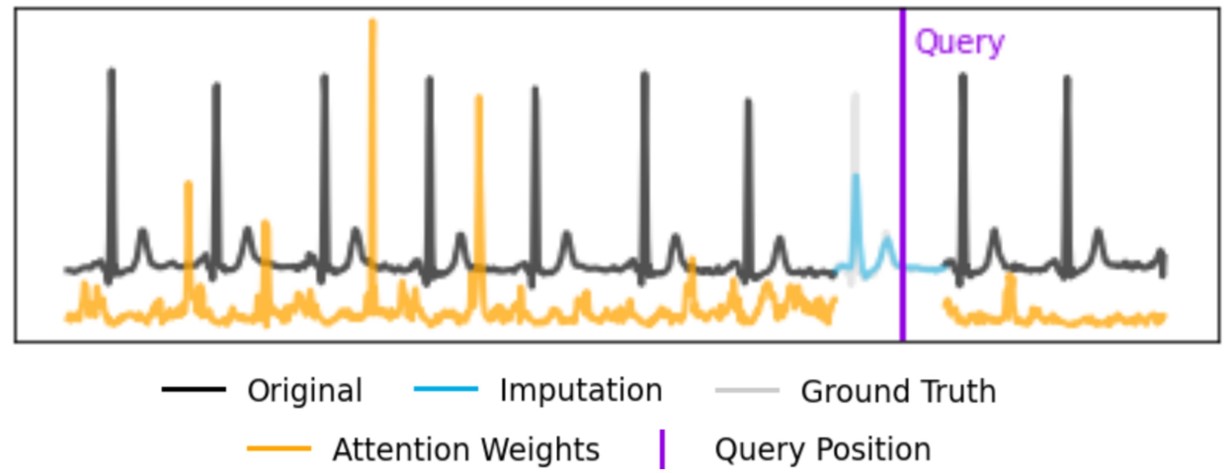
|
BDC exploits quasiperiodicity by attending to similar shapes. |

|
|
|
|
|
| The promise of Mobile Health (mHealth) is the ability to use wearable sensors to monitor participant physiology at high frequencies during daily life to enable temporally-precise health interventions. However, a major challenge is frequent missing data. Despite a rich imputation literature, existing techniques are ineffective for the pulsative signals which comprise many mHealth applications, and a lack of available datasets has stymied progress. We address this gap with PulseImpute, the first large-scale pulsative signal imputation challenge which includes realistic mHealth missingness models, an extensive set of baselines, and clinically-relevant downstream tasks. Our baseline models include a novel transformer-based architecture designed to exploit the structure of pulsative signals. We hope that PulseImpute will enable the ML community to tackle this significant and challenging task. |
| Standard Imputation Datasets |
Existing mHealth Datasets |
ECG Imputation Datasets |
Our PulseImpute Challenge |
|
|---|---|---|---|---|
| mHealth Pulsative Signals |
✓ | |||
| Publicly Available Data |
✓ | ✓ | ✓ | |
| Realistic Missingness |
✓ | ✓ | ✓ | |
| Directly Evals Missingness |
✓ | ✓ | ✓ | |
| Comprehensive Benchmarks |
✓ | ✓ | ||
| Downstream Tasks |
✓ | ✓ | ✓ | ✓ |
| PulseImpute Tasks |
Signal Type and Origin |
Total Size | Length | Missingness | Downstream Task |
|---|---|---|---|---|---|
| ECG Imputation and Cardiac Multi-label Classification |
ECG Signals from PTB-XL |
21,837 Signals from 18,885 Patients |
10 Sec at 100 Hz |
Simulated Extended Loss, Simulated Transient Loss |
Classifying Form, Rhythm, or Diagnosis Labels (Macro-AUC) |
| ECG Imputation and Heartbeat Detection |
ECG Signals Curated from MIMIC-III Waveform |
440,953 Signals from 32,930 Patients |
5 Min at 100 Hz |
102,201 Extracted ECG mHealth Field Study Patterns |
Detecting R Peaks (F1-Score) |
| PPG Imputation and Heartbeat Detection |
PPG Signals Curated from MIMIC-III Waveform |
151,738 Signals from 18,210 Patients |
5 Min at 100 Hz |
425 Extracted PPG mHealth Field Study Patterns |
Detecting Systolic Peaks (F1-Score) |
|
Self-attention's pairwise comparisons can compare waveshapes across quasiperiods. We can effeciently increase local context via the BDC self-attention module. |

|
BDC exploits quasiperiodicity by attending to similar shapes. |

If slides do not load, please download them here: https://maxxu05.github.io/projects/pulseimpute/PulseImpute_Neurips_Results.pptx
| PulseImpute is a novel imputation challenge for pulsative mHealth signals. Prior work time-series imputation work fails in our setting, but our BDC Transformer demonstrates the potential of exploiting signal structure. Pulsative signal imputation over long gaps as well as reconstruction of features tied to Diagnosis are key unsolved mHealth challenges, and we hope that our challenge can drive future work in this critical and unique challenge. |